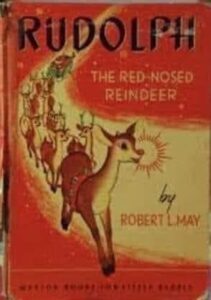Knox the Fox has two friends in the house this season: Santa Claus and Rudolf the Red-nosed Reindeer. He looked into how their legends began.
The legend of Santa Claus can be traced back hundreds of years to a monk named St. Nicholas, believed to be born sometime around A.D. 280 in modern-day Turkey. St. Nicholas became the subject of many legends, mostly being that he gave away all of his inheritance to helping the poor and sick.
By the Renaissance era, St. Nicholas was the most popular saint in Europe and near the end of the 1700s, made his first appearances into American popular culture when a New York newspaper reported groups of Dutch families had gathered to honor the anniversary of his death.
The name Santa Claus evolved from the Dutch nickname, Sinter Klaas, Sint Nikolaas being Dutch for Saint Nicholas. At the 1804 meeting of the New York Historical Society, member John Pintard distributed woodcuts of St. Nicholas with the background of the engraving containing our now all-familiar Santa image of stockings filled with toys and fruit hung over a fireplace.
It wasn’t long after the evolution of Santa Claus in America that in 1822 Clement Clarke Moore wrote a Christmas poem for his three daughters titled An Account of a Visit from St. Nicholas.
Moore’s poem became known as ’Twas the Night Before Christmas and in 1881, cartoonist Thomas Nast drew on Moore’s poem to create the first likeness that matches our modern image of Santa as a plump, jolly man with a full, white beard, in a bright red suit trimmed with white fur holding a sack of toys coming from a North Pole workshop with elves and his wife, Mrs. Claus.
No Rudolf in Santa’s workshop? That’s right! Dasher and Dancer and Prancer and Vixen and so on, but Rudolph didn’t come along until 1939.
Another writer, Robert L. May, brought Rudolf into the Santa Claus story. May always wanted to write the great American novel but he wound up being a catalog writer at Montgomery Ward in Chicago. The department store used to give away free books to kids each Christmas, and May thought Rudolph would be a great character in one, so in 1939, he wrote Rudolf as a small booklet for the store to give out to customers.
Montgomery Ward printed more than two million copies of Robert L. May’s book and with the help of his songwriter brother-in-law, turned the little booklet into a song, that was picked up by the famous cowboy, Gene Autry.
The song soared off the charts in 1949 and then it became my favorite all time Christmas children’s classic film, Rudolph, The Red-Nosed Reindeer.
All together, “Rudolph” earned Robert L. May enough money to keep him and his family comfortable through the end of his life and beyond.
Knox the Fox wonders if he too can become a legend like Santa and Rudolf if only the legend of KnoxTNToday.
Knox the Fox loves to share your trips or legends so share yours with susan@knoxtntoday.com.

